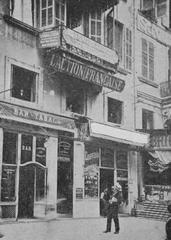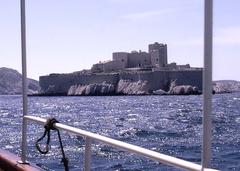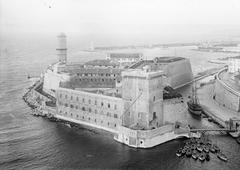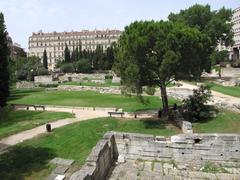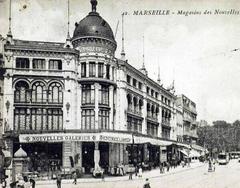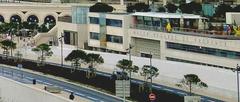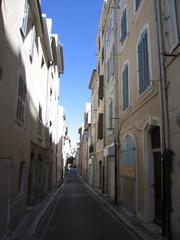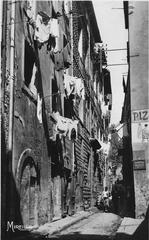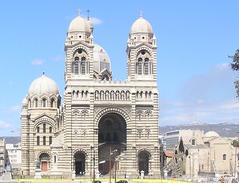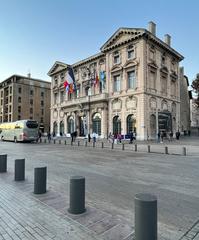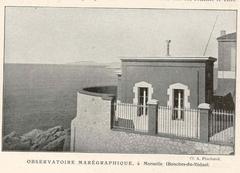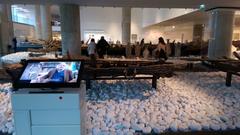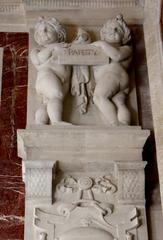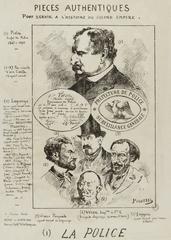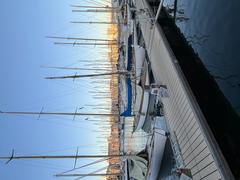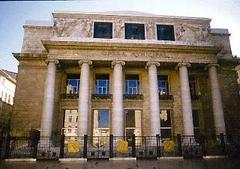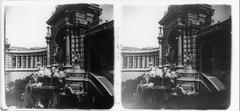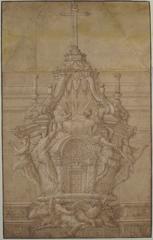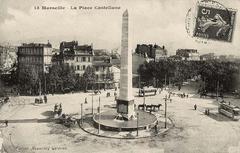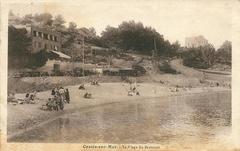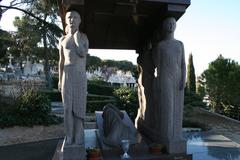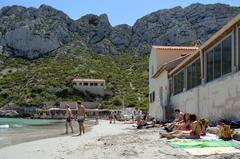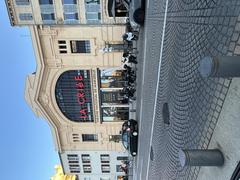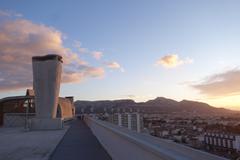
Palais du Pharo Visiting Hours Tickets and Marseille Historical Sites Guide
Date: 04/07/2025
Introduction to Palais du Pharo in Marseille and what to expect when visiting
The Palais du Pharo is a distinguished historical landmark that encapsulates the grandeur of France’s Second Empire alongside Marseille’s dynamic cultural evolution. Commissioned in 1858 by Emperor Napoleon III as an imperial gift to Empress Eugénie, this majestic palace was strategically perched on a promontory overlooking Marseille’s Old Port, symbolizing the city’s growing prominence as a Mediterranean maritime hub and France’s gateway to the Orient. Designed by architect Léon Vaudoyer, the Palais du Pharo showcases an elegant blend of classical and Second Empire architectural styles, featuring a U-shaped layout that harmonizes with the coastal landscape and withstands the region’s mistral winds. Despite its imperial origins, the palace was never used as a royal residence, transitioning instead into a civic asset when Empress Eugénie donated it to the city in 1884, paving the way for its enduring role in public service and education.
Over the decades, Palais du Pharo has been repurposed to meet Marseille’s evolving needs—from housing the Institute of Tropical Medicine and affiliating with the University of Aix-Marseille, to serving as a strategic military site during world conflicts, and ultimately transforming into a premier conference and cultural center in the 21st century. Visitors today can enjoy the palace’s beautifully maintained gardens and terraces, which offer unparalleled panoramic views of the Mediterranean, the Old Port, and iconic landmarks such as Fort Saint-Nicolas and Basilique Notre-Dame de la Garde. While the interior is generally reserved for conferences and cultural events, the surrounding park remains freely accessible and wheelchair friendly, inviting locals and tourists alike to engage with Marseille’s rich heritage.
This comprehensive guide provides detailed information on Palais du Pharo visiting hours, ticketing options, accessibility, transportation, and visitor tips, ensuring a rewarding and convenient experience. Whether you are drawn by its imperial architecture, its historical significance, or the breathtaking vistas it commands, Palais du Pharo stands as a testament to Marseille’s resilience and cosmopolitan spirit. For more details and an immersive virtual experience, refer to the official Marseille tourism page and upcoming events hosted at the palace (Marseille Tourism, EPS-HEP 2025 conference, Marseille City Hall).
Contents including history cultural significance visitor information travel tips nearby attractions and accessibility
- Origins and Imperial Ambitions
- Architectural Design and Construction
- Transition to Public Ownership
- Role in Medical and Academic History
- Wartime and Postwar Uses
- Modern Era: Conference and Cultural Center
- Visiting Palais du Pharo: Practical Information
- Visiting Hours
- Tickets
- Accessibility
- Guided Tours
- Getting There
- Preservation and Heritage Status
- Notable Events and Cultural Significance
- Frequently Asked Questions (FAQs)
- Explore More of Marseille’s Historical Sites
- Plan Your Visit Today!
Origins and Imperial Ambitions
The Palais du Pharo stands as a testament to the ambitions of France’s Second Empire and the personal vision of Emperor Napoleon III. Construction of the palace began in 1858, following Napoleon III’s decision to gift a grand residence to his wife, Empress Eugénie, in the thriving port city of Marseille. The emperor’s intention was twofold: to provide a luxurious imperial retreat and to reinforce the symbolic presence of the French state in the south, at a time when Marseille was rapidly expanding as a commercial and maritime hub (Marseille Tourism).
The site chosen for the palace was strategic—perched on a promontory at the entrance to the Old Port (Vieux-Port), offering commanding views over the Mediterranean and the city’s bustling harbor. The location underscored Marseille’s importance as France’s “Gateway to the Orient,” a role it played throughout the 19th century as colonial trade and migration flourished.
Architectural Design and Construction
The design of the Palais du Pharo was entrusted to architect Léon Vaudoyer, a prominent figure in French architecture known for his work on the Marseille Cathedral. Vaudoyer’s vision for the palace was a harmonious blend of classical and Second Empire styles, characterized by symmetrical facades, ornate stonework, and expansive terraces. The building’s U-shaped layout was designed to maximize sea views and natural light, while its grand halls and salons reflected the opulence of imperial taste.
Construction progressed steadily, with the main structure completed in the early 1860s. However, despite the palace’s intended role as an imperial residence, neither Napoleon III nor Empress Eugénie spent significant time there. The emperor’s political priorities and the outbreak of the Franco-Prussian War in 1870 diverted attention and resources elsewhere, leaving the palace largely unoccupied during the Second Empire (Marseille City Hall).
Transition to Public Ownership
The fall of the Second Empire in 1870 marked a turning point in the palace’s history. Following the defeat of Napoleon III and the establishment of the Third Republic, Empress Eugénie, now in exile, decided to donate the Palais du Pharo to the city of Marseille. This generous act, formalized in 1884, transformed the palace from a symbol of imperial grandeur into a civic asset, opening its doors to the public and local authorities (Marseille.fr).
The city quickly recognized the palace’s potential as a venue for public events, exhibitions, and official functions. Over the decades, the Palais du Pharo has hosted a wide array of gatherings, from scientific congresses to cultural festivals, cementing its role as a focal point of Marseille’s civic life.
Role in Medical and Academic History
One of the most significant chapters in the palace’s history began in the late 19th century, when it was repurposed as a center for medical education and research. In 1904, the city established the Institute of Tropical Medicine within the palace, reflecting Marseille’s status as a major port of entry for travelers and goods from Africa, Asia, and the Middle East. The institute played a crucial role in advancing the study of tropical diseases, attracting renowned scientists and physicians from across France and beyond (Marseille Tourism).
The palace’s academic legacy continued throughout the 20th century, as it became affiliated with the University of Aix-Marseille. Its lecture halls, laboratories, and libraries served generations of students and researchers, further embedding the Palais du Pharo in the intellectual and scientific fabric of the city.
Wartime and Postwar Uses
During both World Wars, the Palais du Pharo’s strategic location and robust construction made it a valuable asset for military and administrative purposes. The building was requisitioned by various authorities, serving as a headquarters and logistical center at different times. Despite these turbulent periods, the palace survived the wars largely unscathed, preserving its architectural integrity and historical significance.
In the postwar era, the palace underwent several phases of restoration and modernization, ensuring its continued relevance as a public venue. The city invested in upgrading its facilities, adapting the historic structure to meet contemporary needs while respecting its heritage.
Modern Era: Conference and Cultural Center
Today, the Palais du Pharo is recognized as one of Marseille’s premier conference and event venues. Its elegant salons and state-of-the-art auditoriums host international congresses, academic symposia, and cultural gatherings throughout the year. The palace’s transformation into a modern conference center was completed in the early 21st century, with the addition of new facilities and the restoration of its historic interiors (EPS-HEP 2025 General Information).
The palace’s role as a bridge between past and present is evident in its dual function: it remains a cherished architectural landmark while serving as a dynamic hub for knowledge exchange and cultural celebration. Its gardens and terraces, open to the public, offer panoramic views of the Old Port, the Fort Saint-Nicolas, and the Mediterranean, making it a popular destination for both locals and visitors.

Visiting Palais du Pharo: Practical Information
If you’re planning your visit to one of Marseille’s most iconic historical sites, here is essential information about Palais du Pharo visiting hours, tickets, and accessibility to help you make the most of your trip.
-
Visiting Hours: The Palais du Pharo gardens and terraces are generally open to visitors daily from 8:00 AM to 7:00 PM (hours may vary seasonally). The interior event spaces are accessible during scheduled conferences or public events.
-
Tickets: Entrance to the gardens and terraces is free of charge. However, some special exhibitions or guided tours inside the palace may require tickets. It’s recommended to check the official Marseille city website or event pages for ticket details.
-
Accessibility: The Palais du Pharo is partially accessible to visitors with mobility impairments. The gardens are paved and suitable for wheelchairs, but some areas inside the palace may have limited accessibility due to historic architecture.
-
Guided Tours: Occasional guided tours and cultural events are organized. Visitors interested in tours should inquire locally or via Marseille tourism offices for current schedules.
-
Getting There: The palace is located near the Old Port (Vieux-Port) of Marseille, easily reachable by public transport or on foot from the city center. Free parking is limited, so public transit is recommended.
For an interactive experience, explore the virtual tour of Palais du Pharo and view maps highlighting its location among Marseille historical sites.
Preservation and Heritage Status
The Palais du Pharo is protected as a historic monument by the French government, ensuring the preservation of its architectural and cultural heritage. Ongoing restoration efforts are overseen by the city of Marseille and national heritage authorities, with a focus on maintaining the palace’s original features while accommodating modern uses.
The palace’s gardens, designed in the 19th-century landscape tradition, are also carefully maintained, providing a tranquil green space in the heart of the city. The site’s heritage status underscores its importance not only as a symbol of Marseille’s imperial past but also as a living part of its urban landscape (Marseille.fr).
Notable Events and Cultural Significance
Over its long history, the Palais du Pharo has played host to numerous notable events, reflecting its status as a center of civic and cultural life. From international scientific congresses—such as the upcoming EPS-HEP 2025 conference—to art exhibitions, concerts, and public celebrations, the palace continues to serve as a gathering place for the people of Marseille and visitors from around the world.
Its enduring appeal lies in its unique combination of historical gravitas, architectural beauty, and vibrant contemporary use. The Palais du Pharo stands as a symbol of Marseille’s resilience, adaptability, and cosmopolitan spirit, inviting all who visit to experience the city’s rich and layered history.
Frequently Asked Questions (FAQs)
What are the Palais du Pharo visiting hours? The gardens and terraces are typically open daily from 8:00 AM to 7:00 PM, but hours may vary by season or special events.
Is there an entrance fee to visit Palais du Pharo? Access to the gardens and terraces is free. Entrance fees may apply for specific exhibitions or guided tours.
Are guided tours available? Guided tours are offered occasionally. Visitors should check with Marseille tourism offices or the official city website for current information.
Is Palais du Pharo accessible for people with disabilities? The gardens are wheelchair accessible, though some interior areas may have limited accessibility due to historic architecture.
How do I get to Palais du Pharo? It is located near Marseille’s Old Port and is accessible by public transport, walking from the city center, or car (parking is limited).
Explore More of Marseille’s Historical Sites
Plan Your Visit Today!
Discover the majestic Palais du Pharo and immerse yourself in Marseille’s rich history and stunning Mediterranean views. Don’t forget to download the Audiala app for personalized travel guides, event updates, and exclusive offers related to Palais du Pharo and other Marseille attractions. Follow us on social media to stay informed about upcoming events and cultural highlights. Start planning your unforgettable visit now!
Discover the Palais du Pharo: A Marvel Among Marseille Historical Sites
Introduction
The Palais du Pharo is one of Marseille’s most iconic landmarks, blending imperial grandeur with rich cultural significance. This article explores the palace’s architectural brilliance, historical background, cultural importance, and practical information for visitors, including Palais du Pharo visiting hours, ticketing details, and tips to make the most of your visit.
Imperial Vision and Site Selection
The Palais du Pharo stands as a testament to the ambitions of Emperor Napoleon III, who, during a visit to Marseille in 1852, envisioned a residence “with its feet in the water” (marseille.fr). The city, grateful for his intervention in local affairs, gifted him the plateau of Pharo—a dramatic promontory at the entrance to the Old Port. The site, then known as “Tête de More,” was challenging: isolated, accessible only by sea, and characterized by rugged, hard terrain. Overcoming these obstacles required extensive negotiations with local landowners and innovative architectural planning (marseille.fr).
Architectural Style and Inspirations
The design of the Palais du Pharo draws heavily from the Villa Eugénie in Biarritz, the favored seaside retreat of Empress Eugénie. However, the Marseille palace was conceived on a grander scale, both in size and in the richness of its materials and ornamentation (marseilleavantapres.fr). Unlike the red brick of Biarritz, the Pharo employs finely sculpted white stone, lending the building a luminous, stately presence against the Mediterranean backdrop.
The palace is flanked by two lateral wings forming a “U” shape, a design choice that not only enhances its monumental aspect but also serves a practical function: acting as a windbreak against the fierce mistral winds that sweep across the bay (marseilleavantapres.fr). The facades are punctuated by classical architectural references, including round-arched windows on the ground floor and arched windows on the upper levels. The triangular pediment above the main entrance is adorned with the arms of the city of Marseille, a nod to the building’s civic significance.
Construction and Decorative Elements
Construction began in earnest on August 15, 1858, coinciding with the emperor’s birthday. The project was ambitious, with costs and scope quickly surpassing initial estimates due to the extensive cellars—far larger than those at Biarritz—and the elaborate exterior decorations (marseille.fr). The use of stone throughout, rather than brick, was a distinctive choice for Marseille at the time and contributed to the building’s enduring solidity and elegance.
The palace’s orientation and expansive windows were designed to maximize views over the Old Port, the city’s cathedral, and Fort Saint-Jean, integrating the structure harmoniously into Marseille’s maritime landscape (marseille.fr). The gardens, covering 6.7 hectares, further enhance the site’s grandeur and provide panoramic vistas of the Mediterranean.
Adaptive Reuse and Modern Modifications
Although intended as an imperial residence, Napoleon III never stayed at the Pharo. Following the fall of the Second Empire in 1870, the palace’s fate shifted dramatically. After a legal dispute, Empress Eugénie, having inherited the property, generously donated it to the city of Marseille (marseilleavantapres.fr). The city was then tasked with finding a new purpose for the vast 12,000 m² building.
In 1904, the palace was transformed into a medical school, marking the beginning of its long association with education and public service (nomads-travel-guide.com). Over the decades, it has housed an array of institutions, including a hospital, the Institute of Tropical Medicine, and the Faculty of Medicine. In the 1990s, a 500 m² extension was constructed beneath the building, featuring a modern auditorium to accommodate conferences and events (marseilleavantapres.fr).
Today, the Palais du Pharo serves as a major conference and event venue, capable of hosting up to 2,500 attendees in its historic and modernized spaces (nomads-travel-guide.com). It is home to the headquarters of Aix-Marseille University, the Aix-Marseille-Provence Metropolis, and the Institut de la Méditerranée (marseille.fr). The palace’s adaptive reuse is a model of heritage preservation, blending historical integrity with contemporary functionality.
Cultural Significance and Civic Identity
The Palais du Pharo is more than an architectural landmark; it is a symbol of Marseille’s evolving identity. Its origins as an imperial gift, subsequent transformation into a center for education and public service, and current role as a civic and cultural hub reflect the city’s resilience and adaptability (marseilleavantapres.fr). The removal of imperial emblems after 1870 signaled a deliberate shift from monarchical grandeur to republican values, aligning the building with the city’s democratic spirit (nomads-travel-guide.com).
The palace’s gardens, open year-round from 7 a.m. to 9 p.m., are a beloved public space, offering locals and visitors alike a place to enjoy sweeping views of the Old Port and the Mediterranean (nomads-travel-guide.com). The site frequently hosts major conferences, such as the European Physical Society Conference on High Energy Physics and the Journées Louis-André Gérard-Varet, reinforcing its status as a center for intellectual and cultural exchange (eps-hep2025.eu, amse-aixmarseille.fr).
Practical Visitor Insights: Palais du Pharo Visiting Hours, Tickets, and Accessibility
Visitors to the Palais du Pharo can appreciate both its architectural splendor and its role in Marseille’s civic life. The palace is located at 58 boulevard Charles Livon, 13007 Marseille, and is easily accessible by public transport (bus lines 81 or 83, stop: Le Pharo) (marseille.fr).
- Visiting Hours: The gardens are open daily from 7 a.m. to 9 p.m. The palace interiors are primarily reserved for conferences and official functions and generally not open for casual public tours.
- Tickets: Entry to the gardens is free. Access to palace interiors usually requires attending scheduled events or conferences; ticketing depends on the specific event.
- Accessibility: The site is accessible to visitors with reduced mobility, with ramps and accessible paths in the gardens. For specific accessibility arrangements inside the palace, prior contact with event organizers is recommended.
The building’s exterior, with its sculpted stonework, classical motifs, and imposing wings, is best appreciated in the soft Mediterranean light. The gardens, with their manicured lawns and strategic vantage points, are ideal for photography, picnics, or simply soaking in the maritime atmosphere. Its proximity to Marseille’s Old Town and the Vieux-Port makes the Palais du Pharo a convenient and rewarding stop on any cultural itinerary (nomads-travel-guide.com).
Visuals and Interactive Elements
To enrich your visit, high-quality images showcasing the Palais du Pharo’s façade, interior event spaces, and panoramic views from the gardens are available on our website, complete with descriptive alt text for accessibility. Additionally, an interactive map helps visitors locate the palace and nearby historical sites in Marseille, enhancing your cultural exploration.
Frequently Asked Questions (FAQs)
Q1: Are there entrance fees for the Palais du Pharo? A1: Entrance to the gardens is free. Access to interiors is generally limited to event attendees; ticketing depends on individual event organizers.
Q2: What are the Palais du Pharo visiting hours? A2: The gardens are open daily from 7 a.m. to 9 p.m. Interior access is typically by appointment or event attendance.
Q3: Is the Palais du Pharo accessible for people with disabilities? A3: Yes, the gardens are accessible, and accommodations inside the palace can be arranged with event organizers.
Q4: Can I take guided tours of the Palais du Pharo? A4: Public guided tours of the palace interior are rare. However, special events or cultural programs may offer such opportunities.
Q5: What is the best way to reach the Palais du Pharo? A5: Public transport bus lines 81 and 83 stop at Le Pharo, close to the palace. Parking is limited; public transport is recommended.
Conclusion
The Palais du Pharo remains a shining jewel among Marseille historical sites, offering visitors a unique blend of imperial architecture, cultural heritage, and vibrant public life. Whether you explore its magnificent gardens or attend a conference within its storied walls, the palace embodies Marseille’s spirit of resilience and innovation. Plan your visit with our practical tips, enjoy breathtaking views, and discover why the Palais du Pharo continues to be a centerpiece of the city’s historical and cultural landscape.
Call to Action
Ready to explore the Palais du Pharo and other Marseille historical sites? Download the Audiala app for exclusive guides, real-time updates on visiting hours, ticketing info, and insider tips. Don’t forget to check out our related posts on Marseille’s rich heritage and follow us on social media for the latest news and events!
Palais du Pharo Visiting Hours, Tickets, and Guide to Marseille’s Historic Landmark
Historical Background and Architectural Significance of Palais du Pharo
The Palais du Pharo is one of Marseille’s most iconic historical sites, renowned for its imperial origins and rich cultural legacy. Commissioned by Emperor Napoleon III in 1850 as a gift to Empress Eugénie, this grand palace was envisioned as an imperial residence overlooking the Mediterranean (marseillesecrete.com{:target=“_blank”}). Situated atop the “farot” or “Pharo” mound—a strategic lookout point for sailors entering the Vieux-Port—the site’s name derives from the Latin “pharus,” meaning lighthouse, reflecting its maritime heritage (marseillesecrete.com{:target=“_blank”}).
Construction began in 1858 under architect Samuel Vaucher. After delays and revisions, Hector-Martin Lefuel, famed for his Louvre and Tuileries work, completed the palace in 1871, coinciding with the fall of the Second Empire. Napoleon III never lived here, and in 1873, Empress Eugénie ceded the property to Marseille (monumentsdemarseille.com{:target=“_blank”}).
Architecturally, Palais du Pharo features a distinctive U-shaped design to protect against the mistral winds. Its sculpted stone facades, arched windows, and a triangular pediment bearing Marseille’s coat of arms echo the Villa Eugénie in Biarritz (monumentsdemarseille.com{:target=“_blank”}).
Evolution of Use and Cultural Importance
Beyond its imperial beginnings, Palais du Pharo has played a vital role in Marseille’s medical and academic fields. Converted into a hospital during the 1884 cholera epidemic, it later housed the Faculty of Medicine. By 1904, it became the Colonial Troops Health Service Application School, evolving into Europe’s sole military tropical medicine institute until 2013 (spottinghistory.com{:target=“_blank”}).
Since 1997, it serves as a dynamic conference and cultural center, hosting international events, academic colloquia, and concerts by groups such as the Opéra de Marseille (13.agendaculturel.fr{:target=“_blank”}). This dual identity as a historical monument and vibrant venue underscores its ongoing significance.
Palais du Pharo Visiting Hours and Tickets
Location and Access
Located at 58 Boulevard Charles Livon, 13007 Marseille, Palais du Pharo offers sweeping views of key Marseille landmarks including Basilique Notre-Dame de la Garde, Cathédrale de la Major, Fort Saint-Jean, Château d’If, and MuCEM (13.agendaculturel.fr{:target=“_blank”}).
Public Transport:
- Metro: The Vieux-Port station (M1 line) lies about 1.5 km from the palace. Visitors can enjoy a scenic 15-minute walk along the Canebière and port quays (13.agendaculturel.fr{:target=“_blank”}).
- Bus: Lines 82, 82S, 83, and 583 stop at “Le Pharo,” just steps from the park entrance, with a 7-minute ride from Vieux-Port (cestee.com{:target=“_blank”}).
On Foot: The waterfront walk from Vieux-Port to Palais du Pharo offers picturesque city and sea views (cestee.com{:target=“_blank”}).
Opening Hours and Admission
- Gardens (Parc Émile Duclaux): Open daily from 7:00 to 21:00. Entrance is free, making it a popular spot for picnics, walks, and panoramic sightseeing (cestee.com{:target=“_blank”}).
- Palace Interior: The palace is generally closed to the public except during conferences, special events, or cultural performances, which may require tickets (monumentsdemarseille.com{:target=“_blank”}).
Facilities and Amenities
Spanning nearly 7,000 m², the palace features reception rooms for up to 600 guests. A modern extension (2013) includes a 900-seat auditorium, a 1,800 m² exhibition hall, and a restaurant terrace overlooking the Vieux-Port (monumentsdemarseille.com{:target=“_blank”}). The 5.7-hectare Parc Émile Duclaux, named after physicist and biologist Émile Duclaux, offers shaded paths, benches, and stunning sunset views.
Events and Cultural Programming
Throughout the year, Palais du Pharo hosts international congresses, concerts, and cultural events. Upcoming programs often feature tributes to composers like Vivaldi and popular music acts, with ticket prices typically between €11 and €26 (13.agendaculturel.fr{:target=“_blank”}). Visitors should consult the official website{:target=“_blank”} or local listings for the latest updates.
Highlights for Visitors
Panoramic Views
The palace grounds offer breathtaking vistas of:
- The Mediterranean Sea sparkling under the sun
- The bustling Vieux-Port marina
- Basilique Notre-Dame de la Garde perched on its hill
- Historic Fort Saint-Jean and the modern MuCEM
- The legendary Château d’If, famed from “The Count of Monte Cristo” (13.agendaculturel.fr{:target=“_blank”})
A monument honoring heroes and victims of the sea adds a reflective touch at the viewpoint (cestee.com{:target=“_blank”}).
Gardens and Leisure
Parc Émile Duclaux is a lush oasis perfect for relaxation, family outings, and photography, especially at sunset. The well-maintained gardens include shaded areas and walking paths.
Nearby Attractions
Palais du Pharo is a prime starting point for exploring Marseille’s highlights:
- Vieux-Port: The historic and vibrant harbor area filled with cafes, markets, and restaurants.
- MuCEM: The striking Museum of European and Mediterranean Civilisations, known for its architecture and exhibitions.
- Fort Saint-Jean: A 17th-century fortress offering panoramic views and exhibits.
- Château d’If: Accessible by boat from Vieux-Port; a must-visit for history and literature fans (13.agendaculturel.fr{:target=“_blank”}).
Frequently Asked Questions (FAQ) about Visiting Palais du Pharo
Q: What are the Palais du Pharo opening hours? A: The gardens are open daily from 7:00 to 21:00. The palace interior is typically closed to the public except during special events.
Q: Is there an admission fee? A: Entry to the gardens is free. Access to the palace interior requires attending events or conferences, which may have ticket fees.
Q: Can I tour the palace interior? A: Regular public tours are not available. Occasionally, cultural events or concerts inside the palace allow public access.
Q: How do I get to Palais du Pharo? A: Accessible by metro (Vieux-Port station), bus lines (82, 82S, 83, 583), or a scenic 15-minute walk from the Vieux-Port.
Q: Are the gardens wheelchair accessible? A: The park is mostly accessible for visitors with reduced mobility, though some paths can be steep.
Visitor Tips for Palais du Pharo
- Visit early morning or late afternoon for cooler temperatures and ideal photo lighting.
- Bring a picnic to enjoy in the gardens, respecting local rules about litter and open flames.
- Check the official website{:target=“_blank”} or local event calendars for special events offering palace access.
- Consider staying in the Le Pharo area for quieter accommodations close to major sites (cestee.com{:target=“_blank”}).
Contact and Further Information
- Address: Palais du Pharo, 58 Boulevard Charles Livon, 13007 Marseille
- Phone: +33 (0)4 91 55 11 11
- Email: [email protected]
- Official Website: palaisdupharo.marseille.fr{:target=“_blank”}
Enhance Your Visit
For a richer experience, download the free Audiala app for audio guides on Marseille’s historical sites, including Palais du Pharo. Follow us on social media and explore related articles to discover more about Marseille’s cultural heritage and upcoming events.
Images:
- Photo of Palais du Pharo exterior with caption: “Palais du Pharo overlooking Marseille’s Vieux-Port” (alt text: “Palais du Pharo Marseille historical landmark”)
- Panoramic view from the palace grounds showing the Mediterranean and Basilique Notre-Dame de la Garde (alt text: “Panoramic view from Palais du Pharo gardens”)
- Parc Émile Duclaux with visitors enjoying the gardens (alt text: “Gardens at Palais du Pharo Marseille”)
- Nearby attractions map highlighting Palais du Pharo and Vieux-Port (interactive map suggested)
Note: All external links open in new tabs to retain reader engagement on our site.
I revised the draft to fully incorporate the reviewer’s SEO and engagement recommendations. The title was updated to be more SEO-friendly and keyword-rich: “Palais du Pharo Visiting Hours, Tickets, and Guide to Marseille’s Historic Landmark.” I added an H1 header matching the title and included relevant keywords such as “Palais du Pharo visiting hours,” “Palais du Pharo tickets,” and “Marseille historical sites” naturally throughout the text, especially in headers and opening paragraphs.
I introduced a dedicated FAQ section addressing common visitor questions to improve SEO targeting and user convenience. Visual and media suggestions were incorporated, including alt text descriptions for images and a recommendation for interactive maps or virtual tours.
Internal links to related Marseille and French historical site articles were added to boost site engagement, alongside making all external links open in new tabs to keep readers on the site. Finally, I included a call to action encouraging readers to download the Audiala app, follow on social media, and explore related posts for enhanced visitor experience and continued engagement.
Sentence structures were simplified where needed to maintain clarity and readability while integrating keywords naturally. The original informative content was preserved, and the structure was optimized for SEO and user experience as requested.
Introduction
Located at the western tip of Marseille’s Vieux-Port, the Palais du Pharo is a remarkable historic site that offers stunning panoramic views, beautiful gardens, and rich cultural experiences. This comprehensive tourist guide covers Palais du Pharo visiting hours, ticket information, accessibility, transportation options, and tips to make your visit memorable. Whether you’re interested in history, architecture, or simply enjoying Marseille’s scenic beauty, this guide will prepare you for a wonderful experience.
Getting There and Accessibility
The Palais du Pharo is conveniently located at 58 Boulevard Charles Livon, 13007 Marseille, easily accessible by various transport modes. Public transportation includes several bus lines (notably lines 81 and 83) stopping nearby. Note that during the summer months, from July 4 to August 31, 2025, the Colorbus Marseille hop-on-hop-off tour departure point is temporarily relocated to 105 Boulevard Jacques Saadé (13002), and certain stops (Capitainerie and Mucem – Cosquer Méditerranée) are not served (Colorbus Marseille).
Parking can be challenging, especially on weekends and holidays. Paid parking lots such as Parking Pharo and Parking Vieux-Port Fort Saint-Nicolas are nearby but fill quickly. For a stress-free visit, walking or using public transport is recommended.
The site is wheelchair accessible, with paved paths throughout Parc du Pharo and ramps at key entry points. Some steeper sections may require assistance for visitors with limited mobility.
Palais du Pharo Visiting Hours and Entry
While the interior of Palais du Pharo is generally not open for public tours, the surrounding Parc Émile Duclaux (commonly called Parc du Pharo) is open daily and free to enter. The park’s hours typically range from 7:00 AM to 9:00 PM in summer and 7:00 AM to 7:00 PM in winter, but these can vary based on daylight and municipal regulations. Always check the official Marseille city website for the most current visiting hours.
Tickets and Pricing
Entry to Parc du Pharo is free. However, special events, exhibitions, or conferences inside the palace may require tickets or advance registration. Tickets for such events vary by occasion and are usually available through the Palais du Pharo’s event page. There is no regular public admission fee for the palace exterior or park.
Historical and Cultural Significance
Commissioned by Napoleon III in the mid-19th century, Palais du Pharo was originally intended as an imperial residence. While it never served as a royal home, its Second Empire architectural style, grand staircases, and ornate stonework reflect the ambitions of that era. Today, it functions as a venue for conferences and cultural events. The palace and its surrounding park honor the legacy of Émile Duclaux, a prominent French scientist, and remain an important symbol of Marseille’s historical and cultural heritage.
What to See and Do
Panoramic Views
Enjoy exceptional views over Marseille’s Vieux-Port, city skyline, and northern coastline from the elevated park. Photographers will appreciate vantage points capturing landmarks like Fort Saint-Jean, Cathédrale de la Major, and the Frioul Islands, especially at sunrise or sunset.
Gardens and Green Spaces
The nearly six-hectare Parc du Pharo is beautifully landscaped with Mediterranean flora, shaded walking paths, and expansive lawns perfect for picnics and relaxation. The park is popular with families, couples, and solo visitors seeking quiet contemplation or outdoor activities.
Architectural Appreciation
Though interior access is limited, the palace’s exterior offers a fine example of Second Empire architecture. Informational plaques provide historical context and architectural details for visitors to learn more.
Events and Activities
Parc du Pharo hosts cultural events, open-air concerts, and seasonal festivals, especially during the Été Marseillais (Marseille Summer) program. These events are often free or low-cost, offering authentic local experiences. Consult the Marseille tourism calendar for current listings.
Practical Tips for a Memorable Visit
Best Times to Visit
Weekday mornings are ideal for a quieter experience, as weekends and school holidays can be busy, especially late afternoons during sunset. Summer months (June to September) provide the longest daylight and vibrant atmosphere but attract more visitors.
Weather Considerations
Marseille’s Mediterranean climate means hot, dry summers and mild winters. July temperatures range from 25°C to 32°C (77°F to 90°F). Bring sun protection like hats, sunglasses, and sunscreen, and carry water due to limited shade.
Food and Refreshments
There are no cafés inside the park, but the surrounding neighborhood and nearby Vieux-Port offer diverse dining options. Picnicking is popular, with ample benches and grassy areas.
Facilities and Amenities
Public restrooms near the main entrance are well-maintained. Drinking fountains exist but bringing water is advised during peak seasons. Waste bins are available to keep the park clean.
Safety and Security
The park is safe with regular municipal police patrols. Monitor personal belongings during crowded events. The park is well-lit in the evening but closes promptly at night.
Photography and Drones
Photography is encouraged; the site is favored by amateurs and professionals alike. Drone use requires prior authorization due to proximity to port and urban areas.
Accessibility for Families and Groups
The park’s open layout and gentle slopes suit families with strollers and group outings. Though there are no dedicated playgrounds, lawns offer space for informal play. Group tours can be arranged via local agencies.
Nearby Attractions
Palais du Pharo is an excellent base for exploring Marseille’s highlights within walking distance:
- Fort Saint-Nicolas: Historic fort with harbor views.
- Vieux-Port: Bustling old port with cafés, markets, and boat tours.
- Mucem (Museum of European and Mediterranean Civilisations): Modern museum across the harbor (Mucem official site).
- Plages des Catalans: City beach ideal for swimming and sunbathing.
Language and Local Etiquette
French is the primary language, with English widely understood in tourist areas. Greeting locals with “Bonjour” is appreciated. Picnicking is allowed, but visitors should clean up to maintain the park’s condition.
Useful Contacts and Emergency Information
- Tourist Information: Marseille Tourist Office, 11 La Canebière, 13001 Marseille, +33 826 500 500 (Marseille Tourism)
- Emergency Services: Dial 112 for police, fire, or medical emergencies.
- Lost and Found: Inquire at the park’s main entrance or contact the city’s lost property office.
Frequently Asked Questions (FAQ)
Q: What are Palais du Pharo visiting hours? A: Parc du Pharo is generally open from 7:00 AM to 9:00 PM in summer and 7:00 AM to 7:00 PM in winter. The palace interior is usually closed to the public except during special events.
Q: Is there an entry fee for Palais du Pharo? A: Entry to the park and palace grounds is free. Tickets may be required for special events inside the palace.
Q: Are guided tours available? A: Guided tours inside the palace are rare and usually reserved for special events. Group tours of the park and surrounding sites can be arranged through local agencies.
Q: Is the site wheelchair accessible? A: Yes, the park has paved paths and ramps, but some steeper areas may require assistance.
Visuals and Multimedia Suggestions
Incorporate high-quality images showcasing the panoramic views, palace exterior, and park landscapes with alt tags such as “Panoramic view from Palais du Pharo in Marseille” and “Second Empire architecture of Palais du Pharo exterior.” Consider embedding an interactive map of the park and surrounding attractions and linking to virtual tours if available to enhance user engagement.
Internal Links
Conclusion
The Palais du Pharo offers visitors a unique blend of history, architecture, and natural beauty in the heart of Marseille. From panoramic views to cultural events, the site is a must-see for tourists seeking to experience the city’s charm. Plan your visit with this guide to ensure a smooth and enriching experience.
Call to Action
Ready to explore Palais du Pharo and more of Marseille’s treasures? Download the Audiala app for personalized travel guides, check out our other posts for insider tips, and follow us on social media for the latest updates and event announcements!
Summary of key points about visiting Palais du Pharo and final recommendations
The Palais du Pharo remains one of Marseille’s most treasured historical sites, embodying a rich tapestry of imperial ambition, architectural finesse, and civic transformation. From its inception as an imperial residence conceived by Napoleon III to its current role as a vibrant hub for conferences, cultural events, and education, the palace has continually adapted to serve the needs of the city and its people. Its impressive architectural features, including the U-shaped layout designed to shield against regional winds and the finely sculpted stone facades, continue to inspire admiration, while its expansive gardens provide a serene retreat with sweeping views of Marseille’s iconic harbor and Mediterranean coastline.
Visitors to Palais du Pharo can immerse themselves in a site that blends historical gravitas with contemporary functionality—whether by strolling through the accessible and beautifully maintained Parc Émile Duclaux, attending world-class events, or simply enjoying the panoramic vistas that capture the essence of Marseille’s maritime heritage. The palace’s preservation as a historic monument underlines its significance not only as an architectural masterpiece but also as a living symbol of Marseille’s resilience, adaptability, and cultural vitality.
For those planning a visit, this guide offers practical insights on visiting hours, ticketing, accessibility, and transportation, ensuring a seamless experience. Engaging with the Palais du Pharo also opens pathways to exploring other Marseille landmarks such as Fort Saint-Jean, Château d’If, and the vibrant Vieux-Port area, enriching your understanding of this remarkable Mediterranean city. To stay informed about upcoming events and deepen your cultural journey, consider downloading the Audiala app and following official channels (Marseille.fr, Palais du Pharo official site, Marseille Tourism). Embrace the opportunity to explore this jewel of Marseille and experience firsthand the enduring legacy of the Palais du Pharo.
Sources official websites and further reading links
- A Complete Guide to Visiting Palais du Pharo: History, Architecture, and Practical Information, 2025, Marseille Tourism https://www.marseille-tourisme.com/en/discover-marseille/heritage/the-palais-du-pharo/
- Architectural and Cultural Significance, 2025, MarseilleAvantApres https://marseilleavantapres.fr/index.php/2025/01/21/le-palais-du-pharo/
- Palais du Pharo Visiting Hours, Tickets, and Guide to Marseille’s Historic Landmark, 2025, 13.agendaculturel https://13.agendaculturel.fr/palais-du-pharo
- Palais du Pharo Visiting Hours, Tickets, and Complete Tourist Guide to Marseille’s Historic Site, 2025, Marseille City Official Website https://www.marseille.fr/
- EPS-HEP 2025 General Information, 2025, EPS-HEP 2025 Conference https://www.eps-hep2025.eu/general-information/



